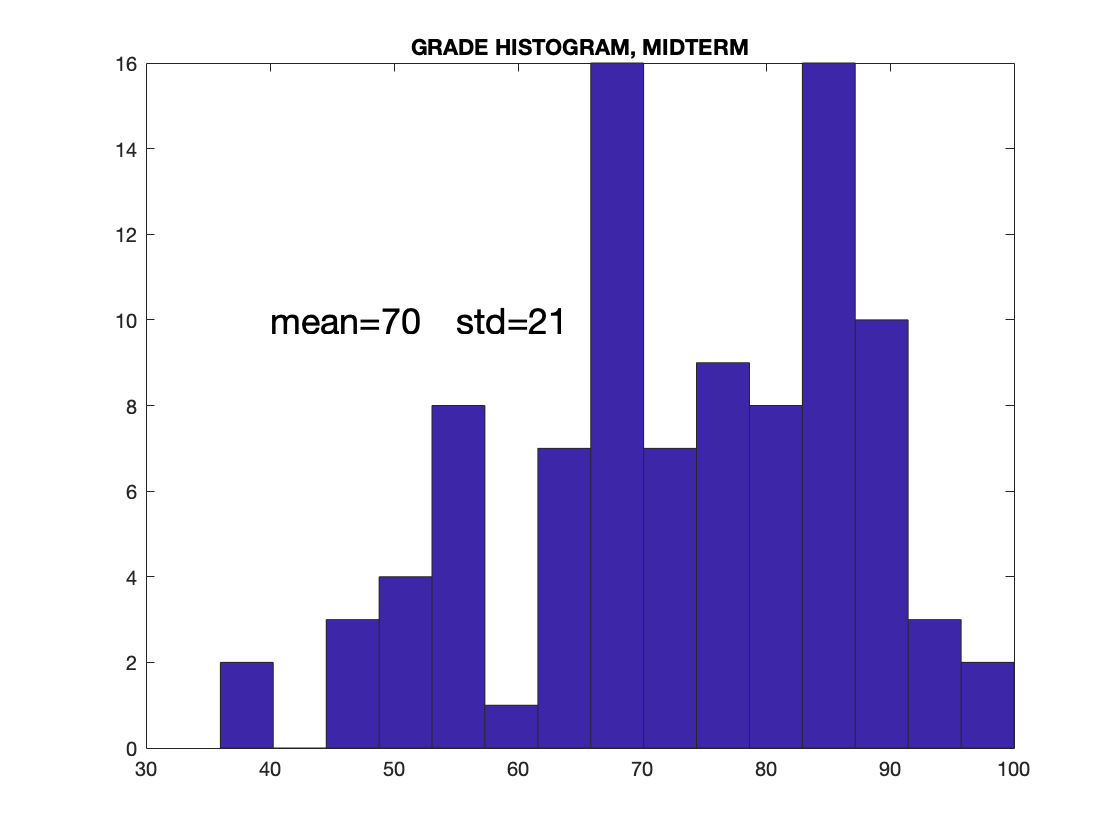MTH 256 Applied Differential Equations
Fall,
KIDD 364, MWF: 11:00-11:50pm
Instructor:
Prof. Juan M. Restrepo
Office/Phone: Kidder Hall 046,
(520) 990-4866 (email is best)
Office hours:
W 3:00 p.m. -- 5:15 p.m.,
or by appointment.
Email:
restrepo@math.oregonstate.edu
Homepage:
www.science.oregonstate.edu/~restrepo
Recitation Instructor :
Darren Marotta
Office: Kidder Hall Rm 052
Office hours: Mon 4-5, Tue 12-1, Wed 4-5,
In MLC: MWF 10:00–11:50 a.m. or by appointment.
Email: marottad@math.oregonstate.edu
Prerequisites
: MTH 254 or equivalent.
Text:
Elementary Differential Equations and Boundary Value Problems, by Boyce and DiPrima.
I will follow the 9th Edition.
There are a lot of used copies for sale (or for rent) on the web.
Learning objectives:
upon successfully completing this course a student should:
|
| • |
|
Know how to interpret geometrically autonomous first order differential equations. |
| Solve second and higher order differential equations with constant coefficients. |
|
Formulate a differential equation as a model for certain types of physical or engineering problems. |
Class Syllabus, Notes, and Other Material
Syllabus, from Boyce and DiPrima 9th Edition.
Lecture notes should be downloaded prior to the lecture.
They are written in such a way to allow you to annotate these during the lecture itself.
Homework Problems Assigned.
Exams
To test your preparation for this course,
you should take this exam.
You do not need to prepare for it.
Take the first three tests.
If you score less than 60% on any of these three topical exams,
you are going to have a very tough time with this course.
The midterm
exam will be on Oct 8, in class.
Material covered by midterm is from Chapter 1 and Section 2.1. Closed book, no calculators/computers.
Performance Analysis: there were nearly 110 students taking the exam.
 The grade histogram appears above (on the x-axis is the grade received, on the
y-axis the number
The grade histogram appears above (on the x-axis is the grade received, on the
y-axis the number
of students getting grades in each bin). 60% of the grade came from
questions based upon material in the class or the homework.
Hence, if your grade is below 60, it can be said that you need a new
class strategy to ensure success in this class.
Make an email appointment: I'll be happy to discuss
class progress, the exam, and suggestions for class strategies.
Final Exam Review Session: Tuesday Nov 27, 4-5:30, Rm 364 Kidder.
NOTES FROM REVIEW ARE HERE.
The final exam takes place on Thursday Dec 6, 7:30-9:30am, Withycombe 105.
The exam consists of 16 multiple choice questions and 4 written
questions.
No notes or calculators are allowed.
You will be given the
FORMULA
SHEET and
the table of Laplace transforms.
No make-up
midterm or final exam will given after the
scheduled time under any circumstances:
if you miss the midterm for a documented emergency, your final exam will be worth 300 pts.
If you miss the recitations or final, you will be given an incomplete fail.
Some practice material for the final:
solution exam 1.
FORMULA SHEET.
practice exam1.
practice exam1 key.
practice exam2.
practice exam2 key.
spring 2015 midterm exam2 key.
practice final.
practice final key.
HOW TO SUCCEED IN THIS COURSE:
This course requires a lot of time. Plan accordingly: for every hour of
class time, plan on 2-3 hours of study time.
Most students who find this course challenging have poor command of calculus.
Many students who perform best, not surprisingly, are those that seek help
during office hours from the instructor or the recitation instructor.
Make time for office hours. It's one of the
best and fastest ways to clarify questions and perform better in exams
The exams are structured to reward hard work and/or for being clever, and clear and structured ideas.
If you come prepared for the exam, you should be able to do well: there will always be
homework problems and there will always be something done in class.
This is 60% of your grade.
That means that there is no reason to have less than 60/100 if you were doing all of your homework and going over all of your classnotes. The rest of the exam is problems similar to those that appear in
your homework.
Study in small groups.
If you miss a day of class you should
try to obtain notes from
one of your classmates and study the missed lesson as soon as possible.
Calculus
classes move fast and MTH 256 will be no exception, and you will find
it difficult to catch up if you fall behind.
Be sure to seek help
immediately if you are having trouble with any concepts
by asking questions in class, by making full use of the
free
tutoring services provided by the MLC located in Kidder 108, or the
instructor during the scheduled office hours.
| Grading information:
|
| Recitation/Homework | 200 points |
| 1 Midterm Exam | 100 points |
| Final Exam | 200 points |
| Total points possible | 500 points |
| The
grading scale for the course is guaranteed to be no higher than the
following cutoffs:
|
|---|
| A: | 450 – 500
|
| B: | 400 – 449
|
| C: | 300 – 399
|
| D: | 275 – 299
|
| F: | 0 – 274
|
Course Catalog Description
OSU Academic Dishonesty Policy
Disability Access Services
Last modified on Sep 2, 2014 by Juan Restrepo.

